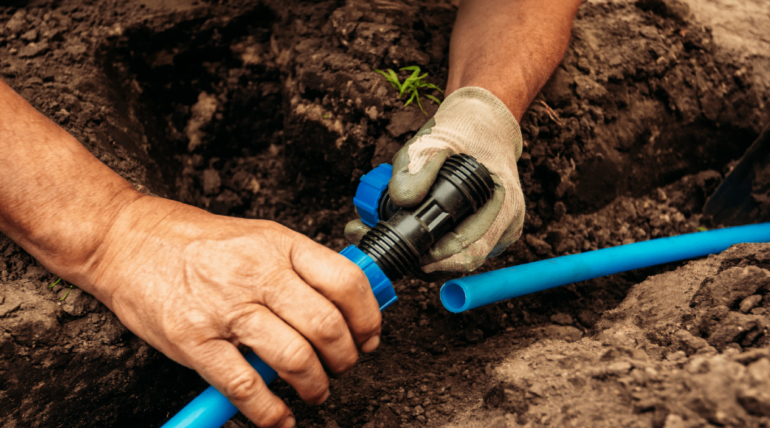
May 4, 2024
Drainage
Proper drainage is essential for the efficient management of water in various contexts, including agriculture, urban planning, and construction. It involves the use of pipes, ditches, or natural channels to redirect water away from buildings, fields, or roads, promoting overall water management.
Drainage Systems Types
Drainage systems Types and methods are as under:
Surface Drainage:
It prevents flooding and soil erosion by guiding excess water into designated channels, ditches, or storm water systems. Alternatively, it can involve artificial systems like gutters, ditches, and swales designed to direct surface water away from areas where it can cause damage.
Subsurface Drainage:
This involves removing water that has penetrated the soil and is causing problems like waterlogging. Subsurface drainage systems typically consist of pipes or drains buried underground to collect and transport excess groundwater away from the area.
Agricultural Drainage:
Farmers often implement drainage systems to control the water table and prevent waterlogging, which can harm crops. Tile drainage, ditches, and surface grading are common agricultural drainage techniques. Effective drainage prevents waterlogging, root diseases, and nutrient leaching, promoting healthy plant growth.
Urban system Drainage:
This often includes storm sewers, catch basins, retention ponds, and treatment facilities to handle both rainwater runoff and wastewater. Urban drainage refers to the management of rainwater and wastewater within cities and towns. Sustainable urban drainage solutions aim to balance urbanization with environmental conservation.
Foundation Drainage:
In construction, foundation drainage is critical to prevent water from infiltrating basements or crawl spaces. This typically involves installing drainage pipes and waterproofing materials around the foundation of a building. Foundation drainage is essential for preventing moisture-related damage to buildings.
Natural Systems Drainage:
In environmentally sensitive areas, natural drainage systems, such as wetlands and vegetated swales, can be used to manage water and filter pollutants before they enter natural water bodies. Natural Drainage Systems, or NDS, are sustainable water management solutions that mimic nature’s processes.
Components of Drainage Systems:
Drainage Pipes:
Drainage pipes are vital in managing wastewater and storm water. Typically made of materials like PVC, concrete, or metal, these pipes transport excess water from homes, streets, and buildings to treatment facilities or natural water bodies, preventing flooding and maintaining environmental balance.
Catch Basins:
Catch basins are vital storm water management components. They collect rainwater and prevent flooding by channeling it into the sewer system. Typically found in streets or parking lots, catch basins filter debris and pollutants, improving water quality. Routine maintenance ensures their effectiveness, safeguarding communities from water-related issues.
Grates and Gutters:
Grates and gutters are essential components of efficient drainage systems. Proper maintenance of grates and gutters is vital for safeguarding homes and infrastructure. These are commonly found along streets and sidewalks and help to direct surface water into the drainage system.
Retention Ponds:
In some areas, retention ponds are built to hold and slowly release excess water, preventing downstream flooding. These man-made basins store excess rainwater, reducing flood risk in urban areas. They trap pollutants, promoting water quality, and facilitate groundwater recharge.
Importance of Proper Drainage:
Erosion Control:
Effective drainage can prevent soil erosion, preserving landscapes and preventing sedimentation in water bodies. Properly constructed systems, including retention ponds, swales, and erosion-resistant materials, play a crucial role in maintaining ecosystem stability.
Maintenance and Environmental Considerations:
- Drainage systems require regular maintenance to remain effective.
- Environmental concerns, such as the impact of urbanization on natural drainage patterns, are gaining more attention.
- Routine inspections and cleaning remove debris, silt, and roots that can obstruct pipes and disrupt flow. Neglecting maintenance can lead to water damage, structural issues, and health hazards, emphasizing the importance of proactive upkeep.
Our Services Include
- French Drains
- Sump Pump Installation
- Yard Grading
- Rain Garden Design
- Erosion Control
Why Choose Us?
- With years of experience, our certified technicians know exactly what it takes to keep your property dry and beautiful.
- We don’t believe in one-size-fits-all solutions. Each project is unique, and we tailor our drainage systems to fit your specific needs.
- Quality drainage doesn’t have to break the bank. We offer competitive pricing without compromising on the quality of our work.
- We understand the urgency of drainage issues. Our team works efficiently to get the job done on time, every time.
